Lighting: a key factor for your stand to cause an impact.
The lighting of the stands is usually quite disappointing. Far from being treated as corporate spaces, the stands are usually overlit or quite the opposite, which is even worse: lack of light in their most important points. Many companies overload their lighting stands because they believe that they will not have problems with their customers., and the truth is that few complain about having too much light. This is where you, knowing very little about the subject, can intervene and I will explain how:

When you give a briefing of your stand to the designer, you must indicate what are the hot spots of your stand. These points should receive more light than the rest. In a well-lit space, different tones and intensities must be distinguished according to the functional and design requirements of each area.
On the other hand, it is necessary to indicate the lighting type required by each area, in terms of what warm, intense, punctual or directed it has to be It is also good to talk about the colors of light and its temperature. A quality light is not the same as a cold led, of course... and this color really determines the atmosphere of your stand a lot.
You also have to take into account the amount of light that will be at the fair, be careful with this. There are pavilions that have a lot of natural light. If you are renting the same space as other editions, you can see it in the photos. A stand bathed in the sun does not illuminate the same... as another in a completely closed pavilion. Another area to be careful with is the corridors.
Logos, images and main texts have to be bathed in specific light sources, if not backlit. Treatment areas often require warmer lighting, while product areas call for directional lighting.
To achieve each choice we will describe the different types of bulbs that are most used in the room. The reality is that a company that makes stands cannot be compared with those that make commercial spaces (retail), nor is the budget with which they work. For this reason, I am going to skip many types of expensive bulbs that are not usually offered at fairs. But that does not mean that the available material does not allow a sensational finish.

A- LED Projectors

This type of device is the most used at the fair and when it is used well it is great. The problem is that many assemblers only use this luminaire, ignoring many other possibilities. LED bulbs have replaced the old halogen bulbs. With a 5w LED bulb, a lighting effect approximately equivalent to a 35-40w halogen bulb is achieved. A 50w LED bulb corresponds to what used to be a 250w halogen bulb.

Things to consider
To know the lumens generated by an LED bulb, there is a small formula:
Actual lumens = the number of watts x 70.
- The intensities of the led projectors depend on the brands but are usually: 30w/50w/100w/150w/200w.
- The projectors used to illuminate walls and graphics in a timely manner are those of 50w. The 100w/150w projectors are used for general lighting of the stand. 200w projectors are not as common and are used for large open areas of the stand.
- As for the color temperature, these bulbs are usually offered in three varieties (cold, warm and neutral).
B- Spotlights Pair

These spotlights are point lights that can illuminate a specific element of the stand. When they go to the floor or the walls, they create very interesting environments. In the past, filters were used to change the color of the light, but now with rgb led bulbs you can change any color through the bulb.

Aspects to consider
LED PAR lights have some distinctive features that set them apart from other types of LED lights and lighting in general. Some of these features include:
- Beam type: LED PAR spotlights have a very focused beam, that is, they emit a very directional light in only one direction. This makes them ideal for lighting specific objects or areas.
- Shape: LED PAR lights have a characteristic “can” or “barrel” shape. This is because they use special lenses to focus light into a directional beam.
- Color temperature: LED PAR lights are available in different color temperatures, ranging from warm (2700K) to cool (6500K). This means that they can be adapted to different lighting needs and aesthetic preferences.
- Beam Angle: LED PARs are also available in different beam angles, from narrow (15 degrees) to wide (60 degrees). This allows greater flexibility in the direction and coverage of the light.
C- Ellipsoidal foci
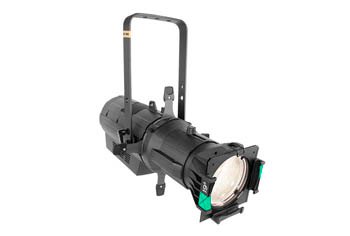
Ellipsoidal reflectors are used to illuminate specific elements at a great distance depending on the intensity of the luminaire. They are very expensive and are only used in very specific cases, to illuminate a specific product or logo. They are usually placed from truss

Things to consider
Why choose an ellipsoidal spot instead of PAR 64 lighting? There are important differences between the two and we are going to explain them:
- Shape: LED PAR spotlights have a round and cylindrical shape, while ellipsoidal spotlights have an oval and elongated shape.
- Beam Angle: LED PAR lights have a fixed beam angle that is determined by the lens of the spotlight, while ellipsoidal spotlights have variable beam angle adjustment through the use of different interchangeable lenses.
- Light quality: LED PAR lights tend to produce a more even and consistent light, while ellipsoidal lights can produce sharper, more defined shadows.
- Light control: Ellipsoidal projectors are often more versatile in terms of light control, allowing you to adjust the shape and size of the beam, as well as create more complex lighting effects through the use of accessories and filters.
- Applications: LED PAR projectors are ideal for illuminating specific objects and areas, while ellipsoidal projectors are more commonly used for stage, theater and cinema lighting, as they offer greater light control and the ability to project patterns and shapes.
D- Track spotlights

Track projectors are an ideal option when it comes to versatility when it comes to changing the location of the projectors. They are commonly used in commercial, exhibition and event lighting to provide flexible, focused lighting. They allow each luminaire to be moved along the rail, allowing a perfect adjustment of the lighting of the environment.


Aspects to consider
- Flexibility: Track projectors can be easily moved and adjusted along the length of the track, allowing for greater lighting flexibility and control.
- Energy efficiency: Track projectors often use LED technology, which makes them more energy efficient and reduces costs in the long run.
- Personalization: Track lights allow quick and easy lighting customization, making them ideal for exhibitions and events where lighting needs to be adjusted to different needs and environments
E- LED dichroic light
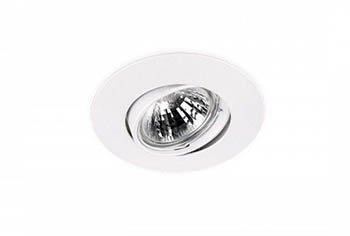
Dichroic lighting looks great on ceilings. You can choose an open beam type to create brighter areas.

Aspects to consider
Transformer Type: Most dichroic LED bulbs require a specific transformer to function properly. Please make sure the transformer is compatible with dichroic LED bulbs before installing them.
Dimmer Compatibility: If a dimmer is to be used with dichroic LED bulbs, be sure to choose an LED compatible dimmer to avoid flickering or flickering issues.
Voltage: Most dichroic LED bulbs work with low voltages, so you will need a transformer to reduce the electrical current to the necessary amount.
Size: LED dichroic bulbs come in many different sizes and shapes, so be sure to choose ones that are compatible with your existing fixtures.
Color temperature: LED dichroic bulbs are available in different color temperatures, from warm to cool. Be sure to choose the right color temperature for the room or space in which they are to be installed.
Beam Angle: LED dichroic bulbs are also available in different beam angles, which can affect the distribution of light in a room. Be sure to choose the right beam angle for the space you are going to light.
Amount of light: LED dichroic bulbs have different levels of brightness, measured in lumens. Be sure to choose the right amount of light for the space you are going to light.
F- Light boxes
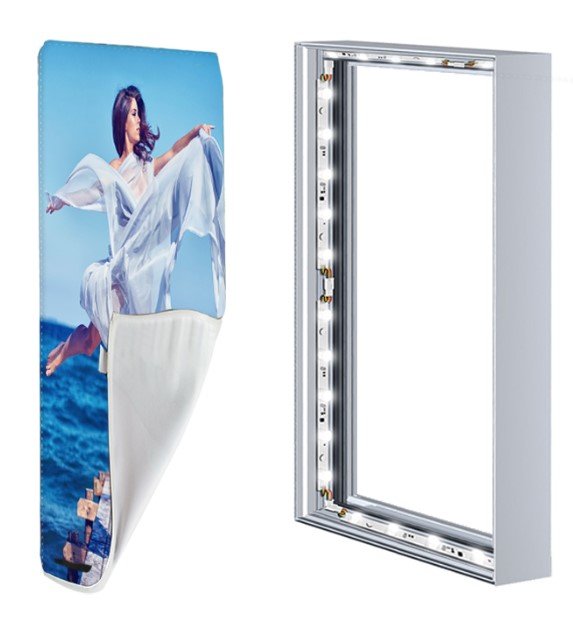
Illuminating part of your booth with backlighting allows you to tint the booth space with colour. This always creates more interesting atmospheres that you can control by varying the color of the graphics.

Aspects to consider
Light boxes can be custom or modular. Custom-made ones have the fabric stapled to an outer frame.
- It is important to provide a trim frame (painted covers) to cover the staples that fix the fabric to the frame.
- In order for the backlight to stand out, it is important to consider the amount of light in the space where it is going to be placed.
- Keep in mind that the LED lighting must have an intensity that allows the backlight to shine. For this, 20w transformer LEDs are used, placed 25cm from each other.
Backlight Types
The three most commonly used types of backlights for backlights are:
- LED strips: the most widely used today, they are usually placed every 25 cm away (depending on the wattage). To achieve a striking lighting effect it is advisable to use 20 watt LEDs.
- Fluorescent: less and less used due to the advent of LEDs.
- Perimeter led strip: The leds have a greater intensity that allows them to be placed only on its perimeter.


G- LED strips

LED strips have revolutionized stand lighting. Thanks to their ease of placement and price, they allow you to create all kinds of environments, being able to vary the color of the light. At the fair they are used with or without a diffuser, depending on whether they are visible or hidden behind the architecture.

Aspects to consider
- LED strips have some peculiarities that you have to know, from their intensity, color to the way they are placed.
- There are 220w led strips, and others with a transformer. The second ones are recommended in an intensity of 20w since they have much more intensity.
- It is important to see the color temperature of the LED strips, since they change the environment of the booth.
- Be careful with the intensity, in some cases they can dazzle too much, especially if they are seen (it is recommended to hide them behind elements to place LED strips with a diffuser.
H- LED strips with diffuser
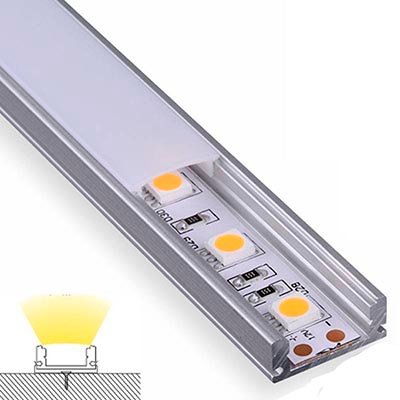
Diffuser LED strips are used to create glare-free lines of light. This applies to both functional and decorative aspects, as LED strips without a diffuser are a bit annoying at first glance.


I - led downlights
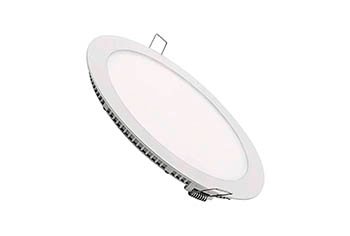
"LED downlight" spotlights are luminaires that are recessed into the ceiling. They are typically used in commercial and residential settings such as kitchens, lounges, offices and retail stores but are also used in booth and spot ceilings that require soft general lighting.

I- Light beam angle

When lighting with LED bulbs it is very important to take into account the angle of illumination. Standard dichroic bulbs usually have a graduation of 120 degrees, but they are usually sold at 70,50,30 and even 10 degrees, which gives us a much narrower and more concentrated angle of light.

Electrical connection and consumption in exhibition stands

Electrical power is key when installing your lighting. You have to be very careful that the power you ask for at the fair matches the power you need for proper lighting. If you want to know in depth this topic I recommend that you visit this post, in which you will find in detail everything you need to avoid making mistakes when hiring this fair service.
Don't miss the next chapter of this exciting adventure!
I hope you find this post about lighting for fair stands useful. In the next post I will talk about another fundamental part in the construction of a stand: The Labeling.






